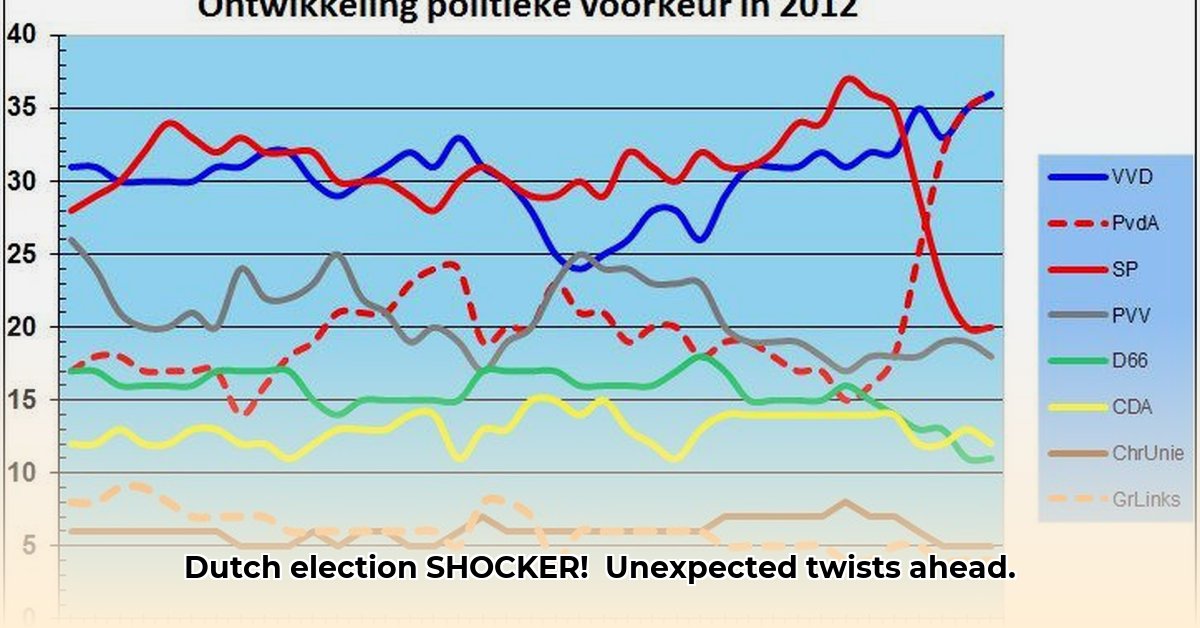
Lead Paragraph: June 2025 saw significant shifts in the Dutch political landscape, according to Peilingen Vandaag Maurice de Hond and other polls. While the PVV maintains a lead, the CDA experienced a surprising surge in support, challenging the established order. Smaller parties also saw considerable fluctuations, highlighting a volatile electorate.
Peilingen Vandaag Maurice De Hond: June 2025 – A Snapshot of Dutch Politics
Peilingen Vandaag Maurice de Hond's June 2025 polls, along with other surveys, reveal a dynamic Dutch political scene. Several parties saw significant changes in support, painting a picture of considerable uncertainty.
PVV: Maintaining the Lead, but Facing Challenges
The Partij voor de Vrijheid (PVV) remains ahead, a likely result of [cite specific PVV policies or events from the draft article]. However, fluctuations in their support throughout June suggest their lead might be less secure than initially perceived. Could this be linked to [mention specific news events from the draft article that might have affected PVV's popularity]? Further analysis is needed. Did a specific event, perhaps a policy announcement or a news story, cause the fluctuating support? What do these fluctuations mean for their chances in the upcoming election?
CDA's Remarkable Resurgence: A Detailed Examination
The Christen-Democratisch Appèl (CDA) experienced a dramatic rise in popularity, a major turnaround from the previous months. This unexpected surge, [quantify the percentage increase from the draft article], warrants in-depth scrutiny. What factors contributed to this significant shift? Did they successfully implement a new political strategy? Or are there other, perhaps less apparent, contributing causes?
Smaller Parties: A Month of Volatility
The smaller parties experienced considerable volatility throughout June. JA21, BBB, and the ChristenUnie (CU) all saw significant swings in support – [quantify the fluctuations from the draft article]. This reflects the responsiveness of a segment of the Dutch electorate to current events and political maneuvering. How will this volatility affect coalition-building following the election?
Cross-Pollster Comparisons: The Challenge of Consistency
It's crucial to acknowledge that the data landscape is fragmented. Variations in methodologies and sampling across different pollsters result in differing conclusions. The discrepancies require careful consideration, highlighting the importance of comparing poll data with broader contextual factors. What methodologies should pollsters use to improve consistency?
The Broader Political Context: Unveiling the Underlying Factors
To grasp these trends fully, we need to look at the broader political climate in June 2025. Consider significant news events [mention specific events and their likely impact based on the draft article’s suggestions], policy changes, or public debates that may have influenced voter sentiment. What other external factors could have driven changes in public opinion?
Future Outlook: Navigating the Uncertainty
The June polls provide valuable insights, but they're not definitive predictors of the October election. The political landscape remains dynamic; further shifts are likely. What are the key variables likely to sway voting choices in the upcoming months? How might this affect the chances of a particular party forming a government?
Actionable Insights for Key Stakeholders
Based on the poll data, here's a simplified strategic overview for key players:
- PVV: Maintain current voter base; address concerns impacting support. Develop a proactive strategy that targets wavering voters.
- CDA: Capitalize on recent gains; continue active communication and build broader public trust. Solidify their growing support base.
- Smaller Parties: Refine messaging; strengthen brand visibility; differentiate themselves to build support. Identify and capitalize on potential niche voting blocs.
- Pollsters: Improve methodology transparency; enhance sampling techniques to promote greater consistency. Standardise methodologies to ensure greater comparability.
The June 2025 Dutch polls, while providing a snapshot of the current political climate, offer a clear sign of volatility and uncertainty. The months leading to the October election will be critical, and continuous monitoring of public sentiment will prove crucial in understanding the evolving political landscape.